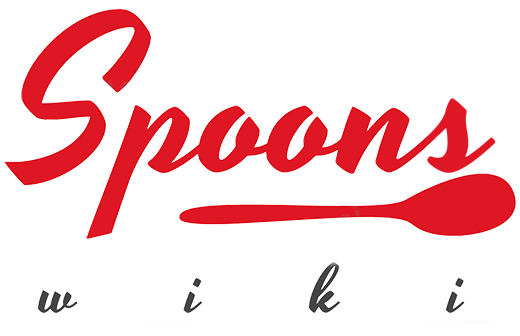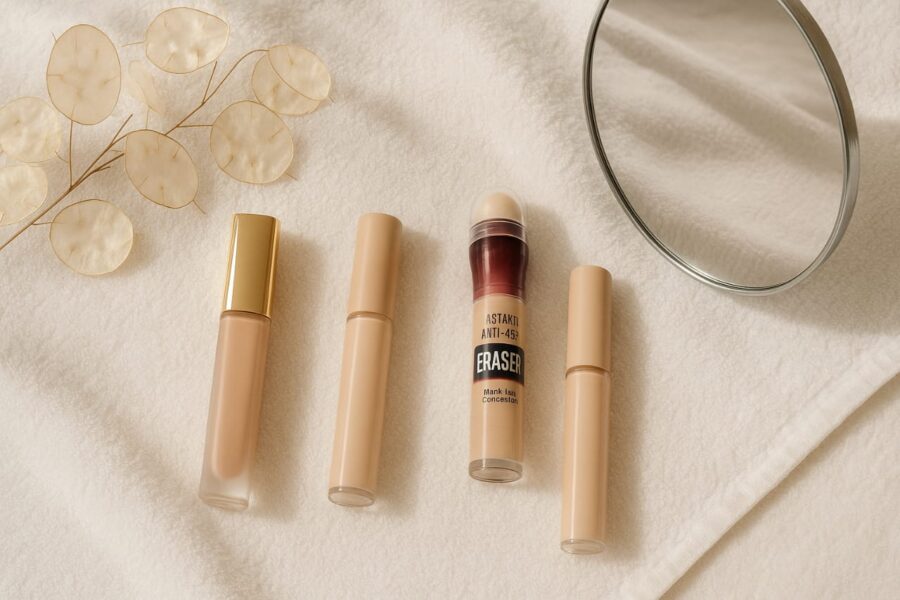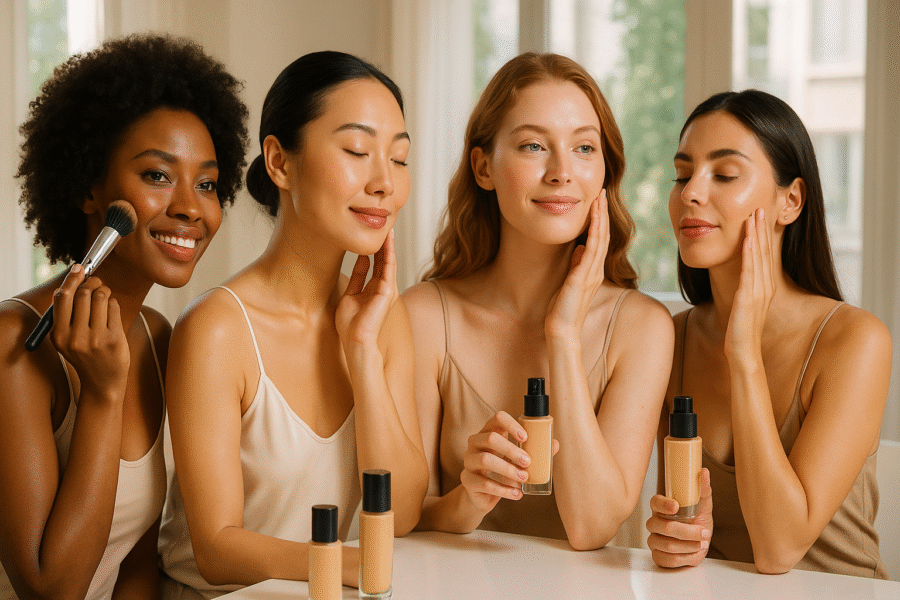Not Every Lip Issue Is the Same
That annoying patch on your lip, is it just dry skin or something more? About 90% of people will get a cold sore at some point in their lives, and many won’t even realize it at first. That’s because chapped lips vs cold sores often feel similar, itchy, painful, and annoying. But treating them the same way? Not a great idea.
Cold sores come from the herpes simplex virus (HSV). They often begin with a tingling feeling. Then, blisters form and crust over. Chapped lips can result from cold weather or dry air. They may crack, peel, and sting, but are not contagious.
The problem? People often confuse one for the other, which delays proper treatment. You might be slathering on lip balm when you need an antiviral cream, or vice versa. Let’s break down the fundamental differences so you can treat your lips the right way the first time.
What Are Chapped Lips?
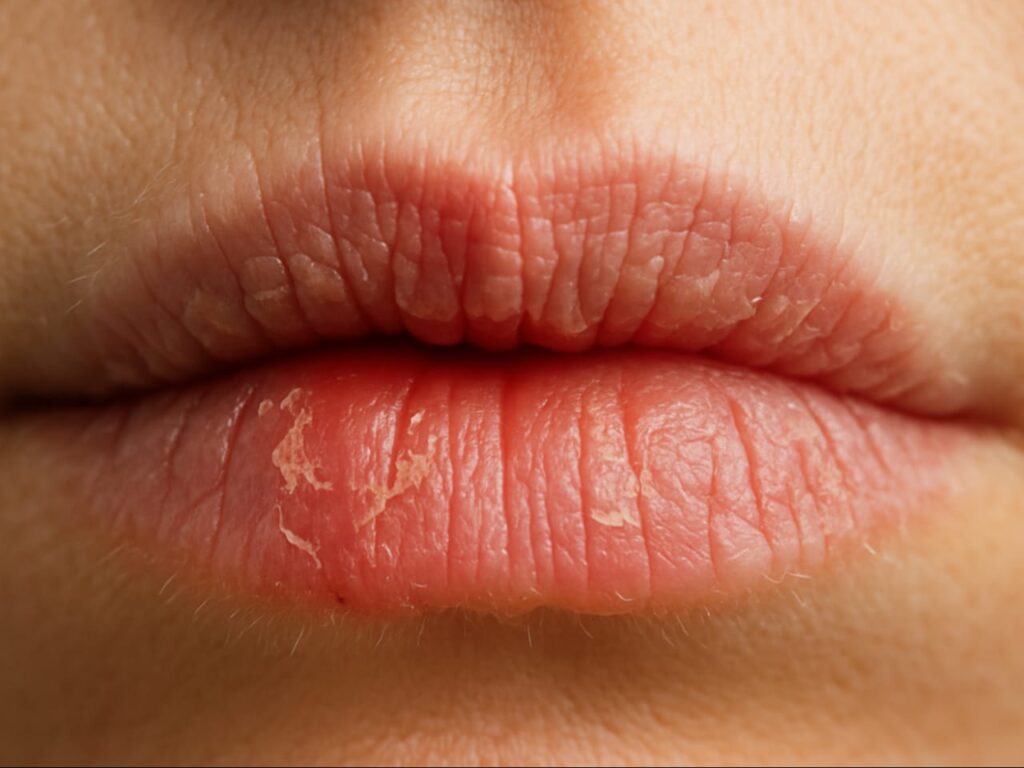
Chapped lips, known as cheilitis, occur when your lips become inflamed. It can happen for a short time or last a long time. Your lips don’t have any oil glands, unlike the rest of your skin, which makes them more likely to dry out and crack. Your lips have thin skin that can quickly lose moisture. It can happen because of different environmental factors, causing discomfort and pain.
You will notice these clear signs if you have chapped lips:
- Dryness and tightness: Your lips might feel stretched and uncomfortable. It can make it hard to smile or talk without irritation.
- Flaking and peeling: You may see dry skin layers shedding from your lips. It often leaves rough patches that can sting when touched or exposed to air.
- Cracks or splits: Small, painful fissures can form, especially at the corners of your mouth. They might bleed when you stretch your lips or eat.
- Redness and swelling: Irritated lips look red and puffy. They may feel warm or burned, making them more sensitive to products and food.
- Sores or scaling: Severe dry lips can cause crusty spots, small sores, or scaly textures. These signs mean deeper irritation and need more care.
Moisture loss stands out as the main reason behind chapped lips. Cold winter air, dry summer heat, and wind can all dry out your lips. Licking your lips might seem helpful, but it makes things worse. The saliva dries up and pulls away more moisture, leaving your lips even drier than before.
Certain medications can make chapped lips worse.
Some drugs can dry out your lips as a side effect, even if you’re staying hydrated. Medications known to increase your chances of chapped lips include:
- Vitamin A supplements: High doses can dry out the skin, including the delicate skin on your lips.
- Retinoids (like Retin-A or Differin): These are often used for acne or anti-ageing, but they tend to zap moisture from your skin.
- Lithium: This medication is often used for bipolar disorder. It can cause dryness and irritation, mainly around the mouth.
- Chemotherapy drugs: Some cancer treatments target fast-growing cells, like skin cells. It can cause dry, cracked lips.
If you’re taking any of these and notice lip dryness, talk to your doctor. They may adjust your dose or suggest a lip-safe moisturizer to help.
Your risk of chapped lips goes up if you’re dehydrated or malnourished. Sun damage to lip tissue can also lead to dryness. Chapped lips usually cover the entire lip area evenly. It makes them easy to tell apart from cold sores, which appear in specific spots. This difference matters a lot when choosing between treatments for chapped lips versus cold sores.
Most cases of chapped lips heal within 2 to 3 weeks with proper care. Something that looks like simple chapped lips might signal a more serious issue. A dry, rough feeling on your lips, especially the lower one, might mean you have actinic cheilitis. You may notice scaly, whitish patches, too. This condition comes from years of sun exposure and might turn into skin cancer.
Chapped lips usually cause temporary discomfort rather than serious health issues. Your lips need extra protection because they lack natural oils that keep moisture in. They dry out faster, especially in harsh weather or if you don’t drink enough water.
Knowing what causes chapped lips helps you distinguish them from other lip problems, like cold sores. Cold sores need different treatments. Quick action to heal your lips works best if you catch the symptoms early.
What Is a Cold Sore on the Lip?

A cold sore on the lip is quite different from chapped lips. It’s a viral infection that shows up as small, painful blisters. Cold sores affect up to 90% of adults worldwide. These blisters usually appear on or around the lips, but you might find them on your cheeks, nose, or chin.
The herpes simplex virus causes cold sores. HSV-1 is the most common culprit, though HSV-2 can trigger them too. Once this virus gets into your body, it stays there for good. It remains inactive until something triggers it.
1. Cold sores on the lip develop through specific stages:
- Tingling stage (Day 1): You may feel itching, burning, or tingling where the cold sore is forming. This sensation signals that the virus has become active again.
- Blistering stage (Days 1-2): Small fluid-filled blisters emerge in clusters within 24 hours. The spot becomes red, swollen, and painful.
- Weeping Stage (Days 2-3): The blisters burst and leak clear or yellowish fluid. This stage makes cold sores the most contagious.
- Crusting stage (Days 3-4): A yellowish or brownish scab develops over the sore area.
- Healing stage (By day 14): New skin appears as the scab slowly and gradually falls away.
The typical cold sore cycle lasts 8-10 days, though some might need two weeks to heal completely. Cold sores are very contagious. It starts with that first tingling sensation and lasts until they are fully healed.
These factors can trigger cold sore outbreaks:
- Stress or fatigue
- Illness or fever
- Hormonal changes
- Sun exposure or sunburn.
- Certain foods
- Weakened immune system
Chapped lips and cold sores differ mainly in where they appear and how they look. Chapped lips affect the entire lip surface evenly. Cold sores pop up as localized clusters of blisters in specific spots. Cold sores go through clear stages, but chapped lips only show dryness and cracking.
Your first cold sore infection might be especially uncomfortable. You could experience fever, sore throat, swollen lymph nodes, headache, or body aches. The good news? Later outbreaks usually come with milder symptoms. It’s worth mentioning that over-the-counter treatments work best during the early tingling stage. People who have frequent or severe outbreaks may get better relief from prescription antiviral medications.
2. How to Get Rid of a Cold Sore in 24 Hours
To manage a cold sore within 24 hours, initiate treatment immediately upon the first sign of symptoms (tingling or itching). Apply an over-the-counter antiviral cream such as docosanol (Abreva) up to five times daily. Use a cold compress to minimize inflammation, and avoid touching the lesion to prevent viral spread.
Supplementing with L-lysine, an amino acid known to inhibit HSV replication, may support faster recovery. Maintain gentle hydration of the affected area with petroleum-based ointments, avoiding excessive product layering. Early intervention and barrier protection are key to reducing duration and severity of cold sore outbreaks.
Chapped Lips vs Cold Sore: Quick Comparison Table
Chapped lips and cold sores may look similar at first glance. Let’s explore the differences to help you identify what’s affecting your lips.
| Feature | Chapped Lips | Cold Sores |
| Appearance | Dry, flaky, cracked skin across the entire lip surface | Small fluid-filled blisters in clusters, usually on one side |
| Cause | Environmental factors (dryness, wind), dehydration, lip licking | Herpes simplex virus (primarily HSV-1) |
| Original symptoms | General dryness and discomfort | Tingling, burning, or itching 24 hours before blisters appear |
| Pain level | Mild discomfort to moderate pain | Often painful, especially when touched |
| Location | Usually affects the entire lip surface evenly | Typically appears on the edge of the lips or around the mouth in specific spots |
| Contagious | Not contagious | Highly contagious from the tingling stage until completely healed |
| Duration | Heals with proper care in days | Typically lasts 8-14 days, whatever the treatment |
| Progression | Remains consistently dry and flaky | Progresses through distinct stages (tingling, blistering, weeping, crusting, healing) |
How to distinguish between them:
- Distribution patterns: Chapped lips affect the entire lip surface. Cold sores appear in specific areas.
- Blister formation: Cold sores create tight clusters of small blisters with clear fluid. Chapped lips rarely blister unless severe damage occurs.
- Different sensations: Cold sores start with a distinctive tingling or burning feeling before becoming visible. Chapped lips lack this warning sign.
- Pain characteristics: Cold sores cause sharp, burning pain in specific areas. Chapped lips create general discomfort and occasional stinging when the lips move or stretch.
These conditions can be connected. Dry and irritated lips might increase your risk of developing a cold sore. Your dormant herpes virus could become active when your lips need protection from becoming chapped. Note that each condition needs different treatment approaches. Antiviral medications work best for cold sores. Chapped lips respond well to moisturizing treatments and protective balms.
Best Remedies for Chapped Lips
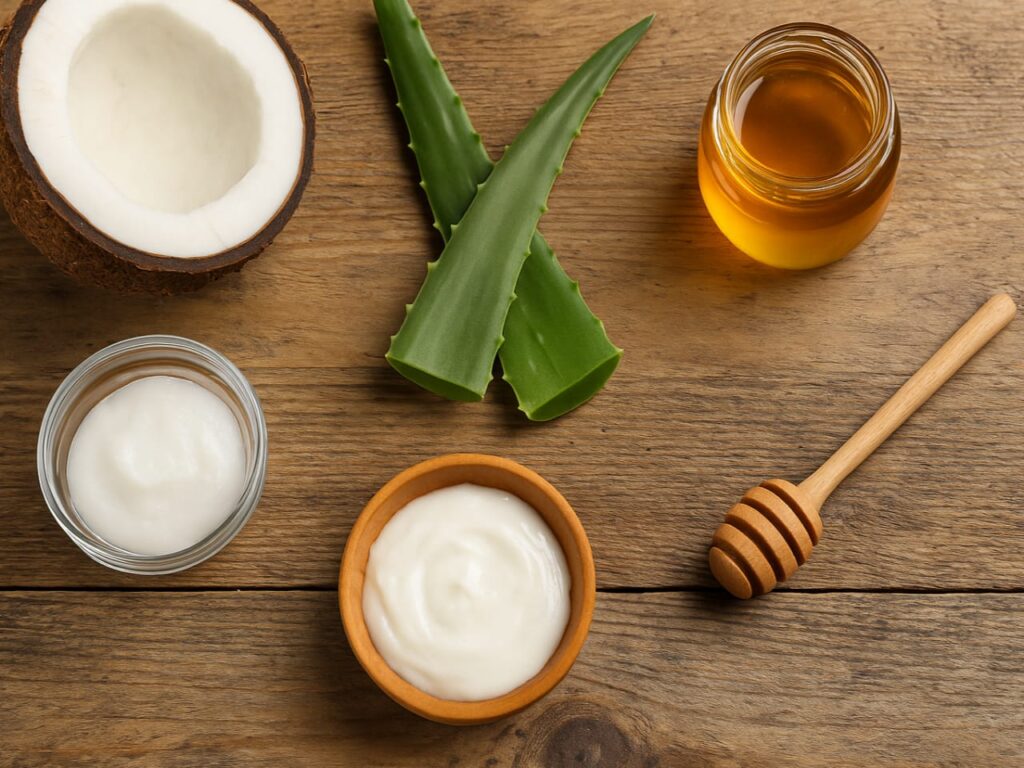
Your lips feel dry and uncomfortable, and finding relief becomes a priority. Chapped lips don’t need antiviral treatments like cold sores do. Instead, they respond well to moisturizers and easy changes in your daily habits.
1. Most Effective Ingredients for Chapped Lips
The best lip balms should contain these essential ingredients, according to dermatologists:
- Petroleum jelly and mineral oil: They create a thick barrier on the lips. They lock in moisture and protect against wind, cold air, and dehydration.
- Shea butter and beeswax: They are rich in natural emollients. They soften rough patches and lock in hydration. Plus, they form a breathable layer to protect lips from environmental stress.
- Castor seed oil: It is very moisturizing. It hydrates lips and helps them keep moisture, so you won’t need to reapply as often.
- Dimethicone and ceramides: help repair skin. They fill tiny cracks and smooth rough areas. Plus, they form a flexible layer that protects against dryness and environmental harm.
Avoid lip care products that contain menthol, camphor, eucalyptus, cinnamon, citrus, mint, or fragrance. These ingredients can irritate sensitive lips even more.
2. Natural Home Remedies
Your kitchen likely contains several ingredients that can soothe chapped lips.
- Coconut oil: It is rich in anti-inflammatory and antibacterial properties. It soothes irritated lips and deeply moisturizes them. Plus, it helps protect against infections and environmental damage.
- Honey: It is a natural humectant. It attracts moisture, speeds up healing, and provides antibacterial protection. This helps keep cracked lips from getting infected.
- Aloe vera gel: Aloe is famous for its soothing and anti-inflammatory effects. It cools chapped lips and reduces redness, swelling, and irritation.
- Olive oil: It is a natural emollient. It is rich in antioxidants and healthy fats. It nourishes dry lips, seals in moisture, and helps the skin heal.
3. Lifestyle Changes for Preventing Chapped Lips
Healthy lips aren’t just about what you apply; they’re also about what you do daily. A few minor tweaks can keep your lips soft and protected.
- Stay hydrated: Drinking water daily keeps your skin healthy. It helps your lips stay moist and reduces cracking or peeling.
- Use a humidifier: Dry air, especially in winter or while you sleep, takes moisture from your lips. A humidifier restores balance and keeps your lips from drying out.
- Stop licking your lips: It might feel good now, but saliva dries fast. This can leave your lips drier and more irritated than before.
- Apply lip balm before bed: Nighttime is prime healing time. Thick balms, such as petroleum jelly, trap moisture overnight. This helps with deep repair and protection.
- Use sun protection: Lips are sensitive to sunburn. Use a balm with SPF 30+ and zinc or titanium oxide to block harmful UV rays and prevent damage.
1% hydrocortisone products, like Dr. Dan’s Cortibalm, can soothe inflammation and pain in severely chapped lips. This low-dose steroid calms irritation, while moisturizing ingredients help with healing. Apply lip treatments often throughout the day, especially after meals and drinks. Most chapped lips show improvement within 2-3 weeks with consistent care. See a healthcare provider if your condition stays the same or gets worse, even with treatment.
Tips to Prevent Both
Your best defence against cold sores and chapped lips is prevention. Good lip care habits can reduce these uncomfortable conditions significantly. Your first defence starts with daily protective measures. Dermatologists recommend using a gentle lip balm several times a day. It helps create a strong moisture barrier. Look for products that contain:
- Petrolatum, or white petroleum jelly, keeps moisture in better than wax-based balms. It forms a firm seal that stops lips from drying out all day.
- Shea butter is a natural moisturizer. It has fatty acids that nourish lips deeply. It soothes irritation and keeps lips soft. Best of all, it doesn’t feel greasy.
- Dimethicone is a skin protectant. It creates a smooth, breathable barrier on the lips. This barrier shields the lips from wind, cold, and other damage.
- Castor seed oil and mineral oil help keep moisture in. They seal the skin to keep your lips soft, supple, and hydrated longer.
- Ceramides are lipids found in the skin. They help rebuild the protective barrier. This restores cracked lips and boosts moisture retention.
Avoid certain ingredients in lip products. Some popular options can worsen these conditions. Stay away from products with camphor, eucalyptus, flavouring (like cinnamon and mint), fragrance, menthol, phenol, or salicylic acid.
Sunscreen protection is vital outdoors. Pick a lip balm with SPF 30 or higher that has titanium dioxide or zinc oxide. Make sure to reapply every two hours when you’re outside. The sun doesn’t just chap your lips; it might trigger cold sores, too.
The air around you matters a lot. Using a humidifier at home is effective, especially in your bedroom. It is helpful if you breathe through your mouth while you sleep. Drinking enough water helps keep your lips healthy from the inside out.
What you eat affects your lips’ strength. Foods rich in vitamins A (like eggs and carrots), C (citrus fruits), E (nuts and leafy greens), and zinc (oysters and yoghurt) repair damage, strengthen your immune system and retain moisture.
These habits can make both conditions worse, so try to stop:
- Licking or biting your lips.
- Touching your mouth when your hands aren’t clean.
- Holding metal objects with your lips.
- Smoking (it hurts your skin’s collagen and elastin)
Your lips should look better within 2 to 3 weeks if you follow these prevention tips daily.
Product Picks by Budget (Optional Section)
Need affordable solutions for your lip problems? The right budget-friendly products can help you treat chapped lips or cold sores. These options give you great value without cutting corners on quality.
1. Budget Friendly: Chap Ice Lip Balm 3-pack (~$4–$5)
This Chap Ice lip balm gives you solid protection at a price that won’t break the bank:
- Made in the USA, this balm features a soothing blend of aloe and Vitamin E, packed into convenient lip chap containers that make application easy anytime, anywhere.
- SPF 15 protection helps guard your lips from harmful UV rays, which can trigger or worsen a Cold sore on the lip, making prevention part of your daily routine.
- The fast-acting formula quickly repairs cracked, dry lips by intensely moisturizing and softening the skin, providing comfort and noticeable improvement within just a few uses.
- Multi-pack options allow you to stash a balm at home, in your car, or at work, ensuring you’re never without protection, no matter where your day takes you.
This budget-friendly option ended up being a great choice because it combines sun protection with moisturizers. You get both healing and prevention benefits, which we talked about earlier.
2. Mid-Range: Palmer’s Cocoa Butter Lip Balm SPF 15
Palmer’s lip balm costs a bit more, but you’re paying for high-quality natural ingredients that deliver:
- Rich cocoa butter acts as a deep moisturizer, softening rough, dry lips. It’s beneficial when figuring out chapped lips vs cold sores and needing daily hydration either way.
- Vitamin E helps repair and protect damaged skin, working as an antioxidant that improves overall lip texture and helps soothe irritation from dryness or a Cold sore on the lip.
- With SPF 15 sun protection, it shields lips from harmful UV rays, perfect for preventing dryness, sun-triggered flare-ups, or worsening lip issues during outdoor exposure.
- This formula comforts irritated lips, preventing chapping, windburn, and cracking while encouraging healing. It’s a soothing daily balm that works across all seasons and skin types.
- Packaged in convenient lip chap containers, it’s travel-friendly, allergen-free (no gluten, coconut, lanolin, or parabens), and ideal for sensitive skin or anyone needing a gentle, effective option
Yes, it is a great choice, especially when you have sensitive lips that need good protection from environmental damage.
3. Premium: Laneige Lip Sleeping Mask (for overnight healing)
This premium option delivers professional results for those who want to invest in overnight treatment:
- Korean skincare technology offers advanced moisturizing power, providing intense, lasting hydration to help manage both chapped lips vs cold sores and keep lips soft and smooth throughout the night.
- Berry Fruit Complex combines antioxidants, coconut oil, shea butter, and murumuru seed butter to nourish and repair lips, enhancing moisture and promoting healing for dry, cracked lips or a Cold sore on the lip.
- Clinical studies showed a 135% increase in hydration immediately after use, making this product an effective option for restoring moisture and preventing lips from drying out or cracking.
- 93% of users reported their lips were noticeably softer with reduced flaking after just one week of use, highlighting its power to heal and maintain smooth, healthy lips.
- The overnight treatment formula allows lips to heal without interruption, ensuring you wake up to hydrated, rejuvenated lips, even after a long day of exposure to environmental elements.
The mask works like an intensive treatment. Your lips repair themselves as you sleep, and the antioxidants protect against more damage.
Note that each product works better for specific needs. Daytime protection comes from balms with SPF, while overnight masks help heal severely chapped lips.
Conclusion: Know the Difference, Treat It Right
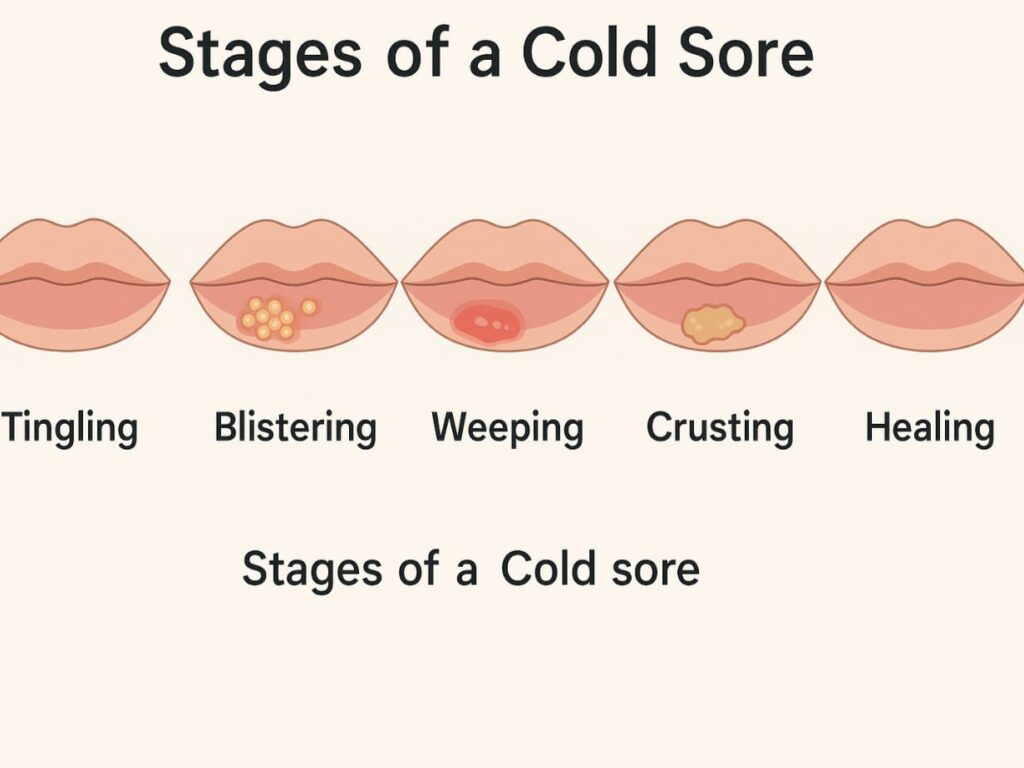
Knowing the difference between chapped lips and cold sores is key to choosing the proper treatment. While they may look similar, they require very different care. Cold sores come from the herpes simplex virus. They often need antiviral treatment and usually heal in 8 to 14 days. Chapped lips improve when you moisturize them regularly. They usually heal in 2 to 3 weeks. About 90% of adults will get cold sores. So, preventing them and taking care of them early is important.
Your daily habits play a big role in lip health. Use lip balm with SPF 30+. Stay hydrated. Avoid irritants like menthol or camphor. Running a humidifier at night also helps prevent dryness. Quick identification of chapped lips vs cold sores leads to faster relief. If symptoms last more than two weeks, see a healthcare provider. It might mean a more serious condition.
